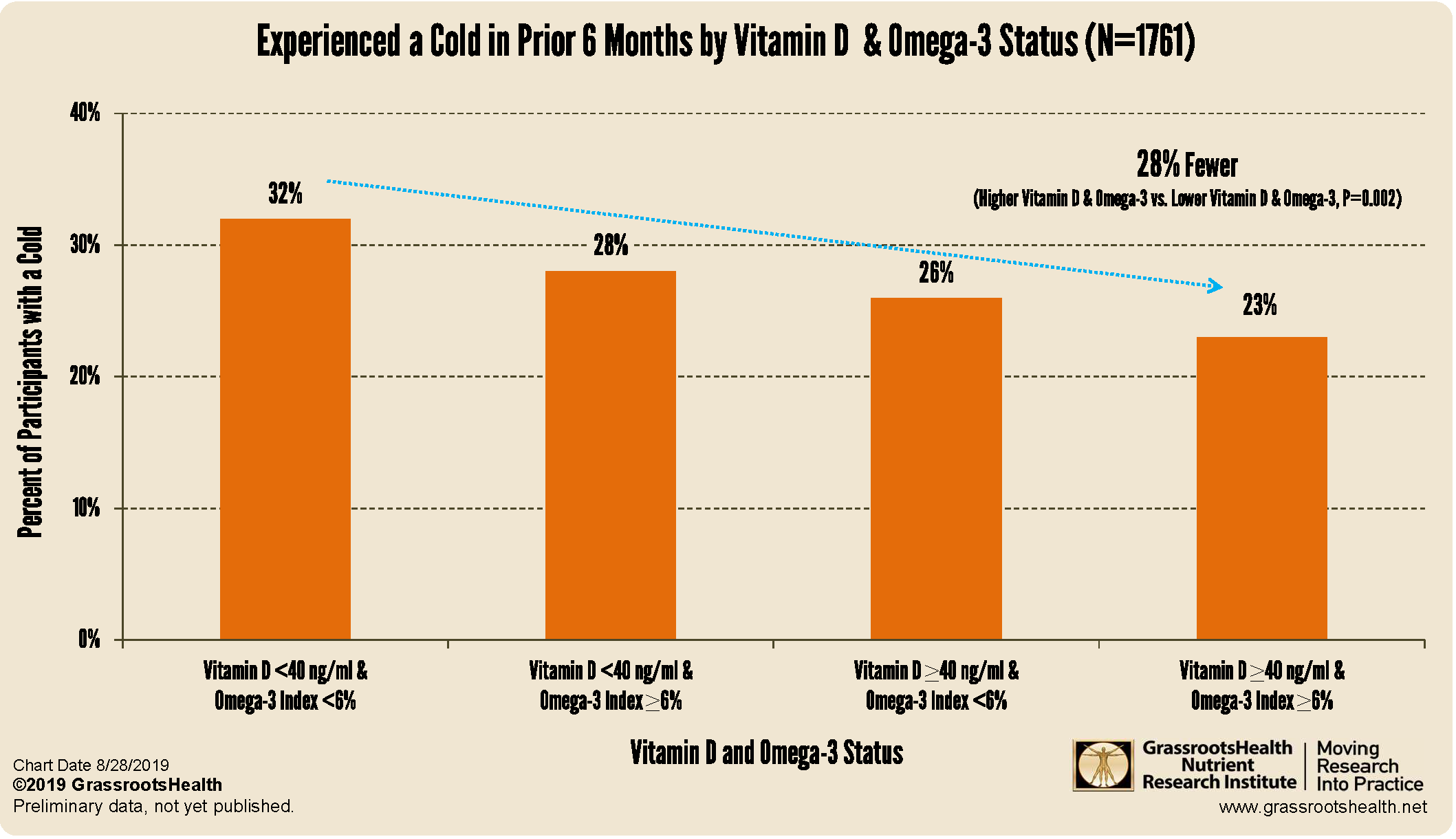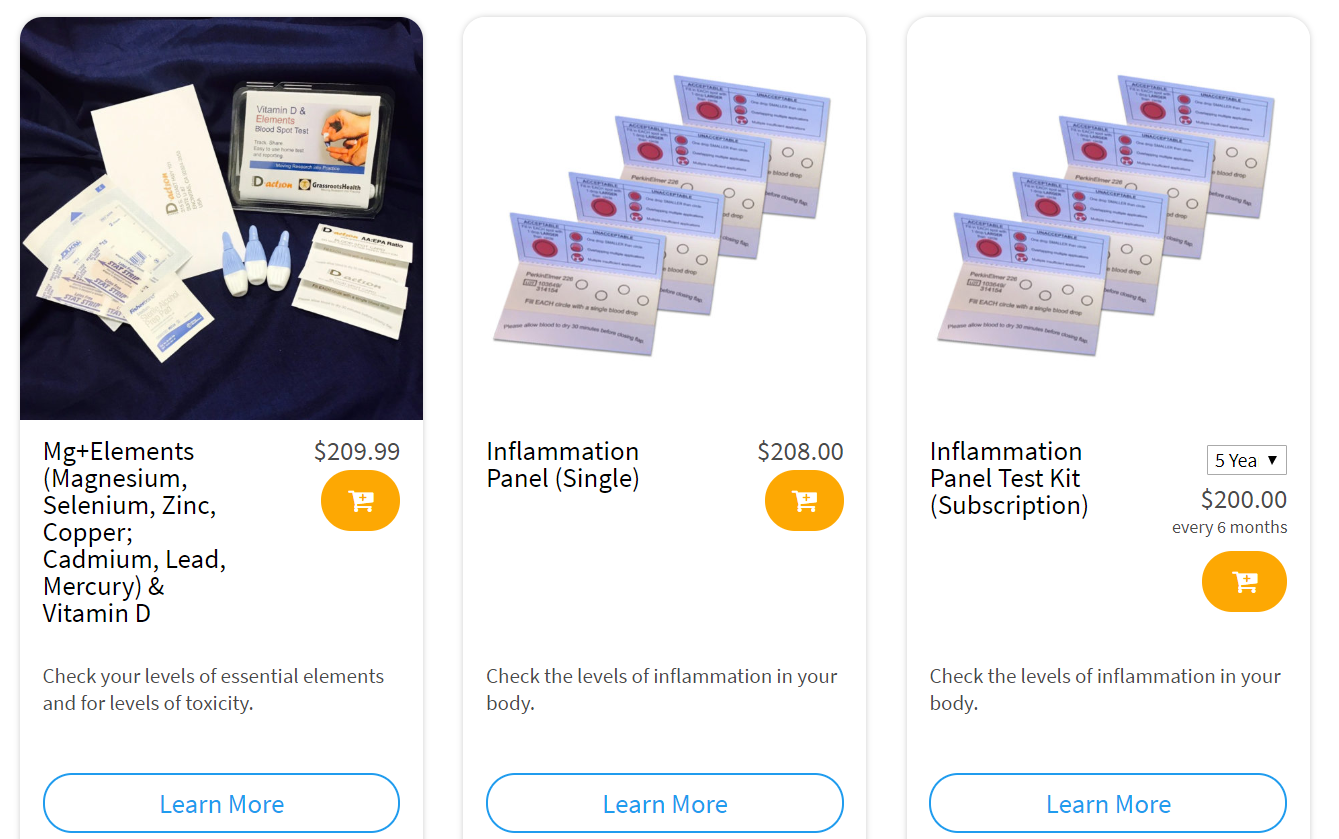Published on October 11, 2019
 For our final post of the series on Cold and Flu Season is Approaching, we will be focusing on what else, besides vitamin D, might help decrease the risk of getting a cold or flu, or the time and severity of symptoms if you do get sick. Our previous posts focused on an introduction to the correlations seen between cold and flu season and seasonal changes in vitamin D levels, the connection between vitamin D and the flu, and some of the research on vitamin D and acute respiratory infections, such as the common cold and pneumonia.
For our final post of the series on Cold and Flu Season is Approaching, we will be focusing on what else, besides vitamin D, might help decrease the risk of getting a cold or flu, or the time and severity of symptoms if you do get sick. Our previous posts focused on an introduction to the correlations seen between cold and flu season and seasonal changes in vitamin D levels, the connection between vitamin D and the flu, and some of the research on vitamin D and acute respiratory infections, such as the common cold and pneumonia.
Could Omega-3s Make a Difference for Colds and Flu?
Like vitamin D, omega-3s have a known immune boosting effect. In an analysis of the GrassrootsHealth cohort data, we looked at the combined effect of vitamin D and omega-3 nutrient status on the occurrence of colds.
We found that the percent of participants who experienced a cold in the prior 6 months was lowest for those with a higher status of both vitamin D and omega-3 (vitamin D levels at or above 40 ng/ml and Omega-3 Index at or above 6%) compared to those with a higher status of just one or the other, or a lower status for both. Specifically, the occurrence of colds was 28% lower among participants with higher vitamin D and omega-3 status compared to participants with lower vitamin D and omega-3 status.
What about Zinc?
Zinc is a key cofactor for approximately 3,000 proteins and enzymes in the body, and is also a co-nutrient for vitamin D function. Similar to vitamin D, zinc is important for immune function and helps your body fight infection by promoting the production of white blood cells. A Cochrane Review on the effectiveness of zinc for the common cold concluded that, when taken within 24 hours of the onset of cold symptoms, zinc can reduce the duration of the cold. Zinc status can be tested through the GrassrootsHealth Nutrient Research Institute as part of the Magnesium PLUS Elements test kit.
Is the flu vaccine the best way to protect against the flu?
As you may already know, being vaccinated is not a guaranteed way to avoid getting the flu. Observational studies on the effectiveness of the flu vaccine, done by the CDC, show a range of effectiveness over the past 10 years of 19 – 60%, with a preliminary effective rate of 29% for last season (2018-2019). Since effectiveness of the flu vaccine varies each season, in part due to how well the vaccine matches the circulating strains of the flu virus, it may be important to consider maintaining target levels of vitamin D, omega-3s, and zinc to give your immune system the support it needs.
Make sure your omega-3, zinc and vitamin D levels are supportive of your health this cold and flu season!
Testing your vitamin D level regularly and taking steps to keep it at a target level of 40-60 ng/ml (100-150 nmol/L) is important for all stages of health. Through GrassrootsHealth Nutrient Research Institute, you can also test your omega-3 status, inflammation levels, and levels of essential nutrients, such as zinc, and dangerous toxins. Find out your levels today! Log on to the shop (click the link below) to get your tests and see for yourself if your level can be improved.
Make sure you track your results before and after, about every 6 months!
Click Here to Access the Shop Page
How can I track my nutrient intake and levels over time?
To help you track your supplement use and nutrient levels, GrassrootsHealth Nutrient Research Institute has created an online tracking system called myData-myAnswers. For each specific supplement, you can track what days you take it, how much, and many other details. This will help you know your true supplemental intake and what patterns of use work for you to reach and maintain optimum nutrient levels. Check it out today!








